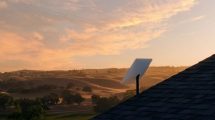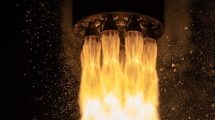 NASA has awarded SpaceX a contract to provide launch services for the Near-Earth Object (NEO) Surveyor mission, a space telescope designed to detect and track asteroids and comets that could pose a threat to Earth. The mission is set to launch no earlier than September 2027 aboard a SpaceX Falcon 9 rocket from Florida.
NASA has awarded SpaceX a contract to provide launch services for the Near-Earth Object (NEO) Surveyor mission, a space telescope designed to detect and track asteroids and comets that could pose a threat to Earth. The mission is set to launch no earlier than September 2027 aboard a SpaceX Falcon 9 rocket from Florida.
The contract, valued at approximately $100m, falls under NASA’s Launch Services II agreement and covers all mission-related costs. NEO Surveyor will carry a nearly 20-inch (50 cm) infrared telescope capable of detecting both bright and dark asteroids—especially those difficult to identify with current observation methods. The mission aims to advance NASA’s planetary defence strategy by identifying and studying potentially hazardous near-Earth objects (NEOs) within 30m miles of Earth’s orbit.
Over a five-year survey, the mission seeks to locate at least two-thirds of undiscovered NEOs larger than 140 meters (460 ft), which are large enough to cause significant regional damage if they were to impact Earth. By utilising infrared imaging, the telescope will provide precise measurements of asteroid sizes, compositions, shapes, rotation patterns, and orbits.
The mission is managed by NASA’s Planetary Science Division and the Planetary Defense Coordination Office, with programme oversight from NASA’s Marshall Space Flight Center. NASA’s Jet Propulsion Laboratory (JPL) is leading development, with contributions from various aerospace and research organizations, including BAE Systems SMS, Space Dynamics Laboratory and Teledyne. The University of Colorado Boulder will oversee operations, while Caltech’s Infrared Processing and Analysis Center will manage survey data.
NASA’s Launch Services Programme at Kennedy Space Center will oversee the launch, marking another significant step in the agency’s efforts to enhance planetary defence and mitigate potential asteroid impact risks.














Add Comment